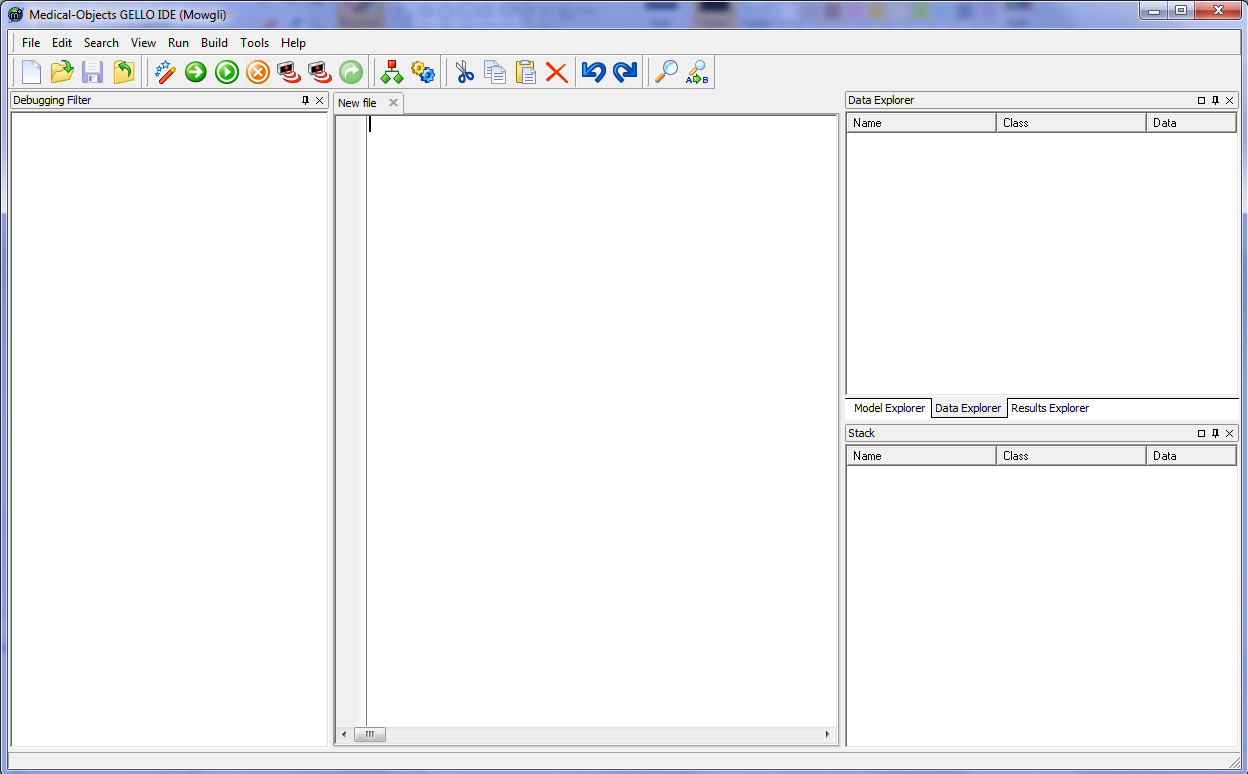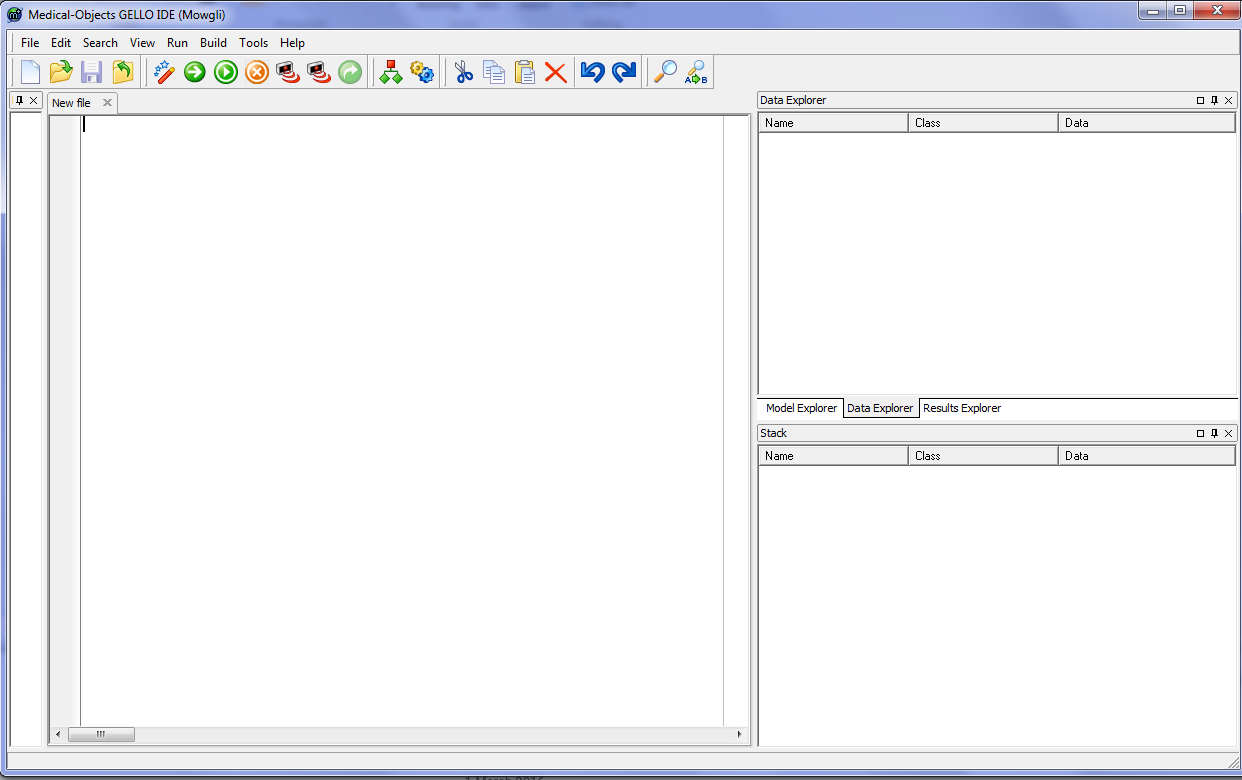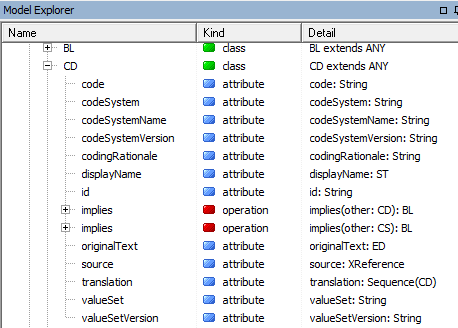Introduction to the editor
Put the downloaded file mowgli_11.exe in a folder called 'Gello'' for example in C: drive. You can make a shortcut to it if you like, or pin it to the taskbar. Run it and you should have this:
On the left hand side (LHS) there is a debugging filter which we won't use so minimise up that window by adjusting the pane size, and make some more room for the RHS panes as well:
So, looking at the editor now we have a largish workspace area where we will write GELLO code, a top menu bar, and on the RHS, a Model Explorer, a Data Explorer and a Results Explorer (in the tabs of the top RHS pane), and a stack for debugging also. We won't use the Stack viewer very much however the pane above it is very important so give it some more vertical room.
GELLO is a query language for writing computer executable decision support in the health domain. It can access information out of a virtual medical record (VMR). A VMR is an information model that presents what is useful for clinical decision support out of an Electronic Health Record. So this will be things like patient age and gender, their past illnesses, operations, medications , allergies etc. GELLO also can perform logic against a reference terminology such as SNOMED CT which means it can do things like ask if the patient has a respiratory disease, without having to type in all possible codes for all possible respiratory diseases to find out.
Before we get started writing our first piece of code take a look at the Model Explorer tab on RHS. Unfold on System Packages:
We'll take a look at the bottom two packages. These describe the ISO 21090 datatypes that GELLO uses (GELLO is strongly typed) and the HL7 v2 VMR which is the default VMR model - although other VMRs may be used. Unfold on iso_21090_datatypes, and scroll down and you can see a large number of types. We will use standard datatypes such as String, Real, Boolean (These are in fact in the System package further up in the last screenshot), and from iso_21090_datatypes - mostly we will use Concept Descriptor (CD), Physical Quantity (PQ), Timestamp (like a datetime) (TS) and the Sequence classes. Codes and code systems get used a lot in health IT and if you unfold the CD datatype class you can see the attributes and operations available to this type:
Now fold all that up and have a look at the HL7_v2_VMR_V1 package. If you are a clinician you will recognise this as a fairly comprehensive summary of clinical information for a patient. Unfolding on Patient class you can see patients have both gender and date of birth, which are in turn of datatypes CD and TS respectively.
Writing some code
So lets write our first GELLO code that simply will be querying a patients gender.
GELLO can be used in different contexts. Here we will be looking at a single patient at a time. So in the workspace say:
Context SinglePatient
and hit the Compile button



